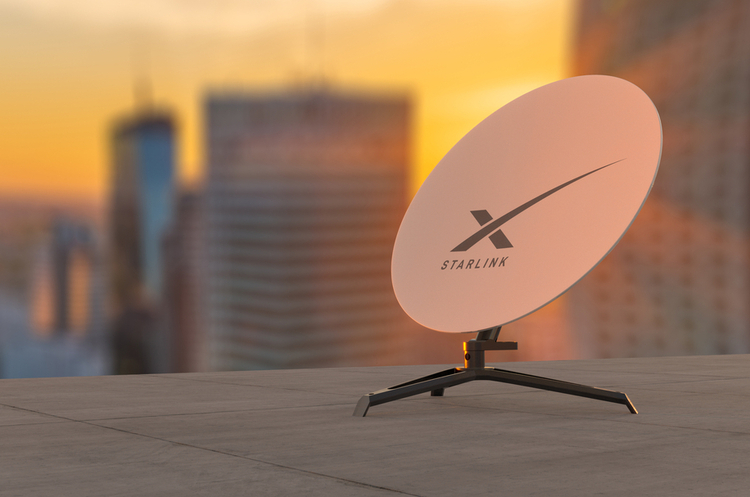A recent report by Ookla, the company behind the Speedtest platform, shared data on Starlink’s download and upload speeds, latency, and comparative performance across multiple African countries. Starlink has been in a few African countries for a couple of years but its popularity is growing.
We spoke with Karim Yaici, Industry Analyst at Ookla, to learn more about the data, the methodology, and what Starlink’s rollout might mean for internet access across the continent.
Speed and Latency Standouts
According to the report, Starlink delivered median download speeds above 60 Mbps in most African countries it operates in, notably Nigeria, Mozambique, Rwanda, and Zambia. In Nigeria and Rwanda, it reached over 80 Mbps, a figure well above what most terrestrial ISPs deliver in rural or underserved areas.
Latency also saw improvements. Starlink’s median latency ranged between 55–65 ms in these countries. In Kenya, this number dropped even further thanks to the launch of a new Point of Presence (PoP).
“We observed a material impact of a new PoP in Kenya on network performance in Eastern African countries, specifically in latency. We expect further improvements if new PoPs or gateways are deployed in more countries.”
— Karim Yaici, Industry Analyst, Ookla
This latency performance is an advantage as Starlink competes with traditional fixed and mobile providers in rural regions where fiber infrastructure is limited.
How Ookla Collected the Data
Ookla based its analysis on crowdsourced Speedtest results unlike other research reports that rely on a mixture of surveys and modeling.
“We exclusively used crowdsourced measurement data from the Speedtest application, in other words, requiring users to initiate the tests,”
— Karim Yaici, Industry Analyst, Ookla
This means the results reflect actual user-initiated tests, providing a real-world snapshot of what Starlink customers are experiencing on the ground.
But with uneven adoption across rural and urban settings, is there a risk of sample bias?
“We don’t specifically control for biases in the data, but we do take sample count and measurement variability into consideration through statistical testing. The objective was to gauge the median download/upload speeds and latency of Starlink connections as an indicator of the performance that would be experienced in each country. By using the median values, we reduced the impact of outliers (either too high or too low) in the samples.”
— Karim Yaici, Industry Analyst, Ookla
To ensure statistical reliability, the report only includes countries where Ookla had consistent quarterly data and a sufficient number of Speedtest samples.
“We selected countries where we have had tens to hundreds of tests every quarter, and consistently over 1 year… We excluded countries that have either a low sample or inconsistent quarter-to-quarter data.”
— Karim Yaici, Industry Analyst, Ookla
This filtering helps ensure that the findings reflect actual performance that is not affected by sporadic testing.
Starlink Remains a Niche Player
Even with growing attention and performance improvements, Starlink still commands a small share of the broadband market in countries like Kenya, Nigeria, and Rwanda.
“Although the numbers are growing fast from a small base, their share of the broadband market remains small. We expect most of these users to be either new broadband users or those who already have a broadband service and use Starlink as a redundancy solution.”
— Karim Yaici, Industry Analyst, Ookla
This insight aligns with broader trends in the satellite internet sector. Adoption is usually high in underserved or rural communities, and many users rely on it as a backup rather than a primary service.
Ookla hasn’t conducted a detailed analysis of user churn from terrestrial ISPs, but the presence of Starlink is clearly expanding the addressable market for broadband, especially in areas where traditional ISPs haven’t reached.
While Ookla hasn’t published formal forecasts tied to Starlink’s future network performance, the data already shows that local infrastructure upgrades (like PoPs) are having a measurable effect.
Expect latency and reliability to continue improving as Starlink expands its terrestrial footprint with more local PoPs and as new satellite launches increase total network capacity.
Starlink’s rollout in Africa is still in its early days, but the initial data is promising. In most underserved markets, it is offering speeds that rival established players.
Still, it faces challenges of affordability, regulatory approvals, and continued investment in local infrastructure. And as Starlink’s footprint grows, so too will the need for transparent, statistically robust performance tracking, such as that provided by Ookla.
Also Read: Airtel Partners with SpaceX to Launch Starlink Internet to Underserved Areas in Africa



